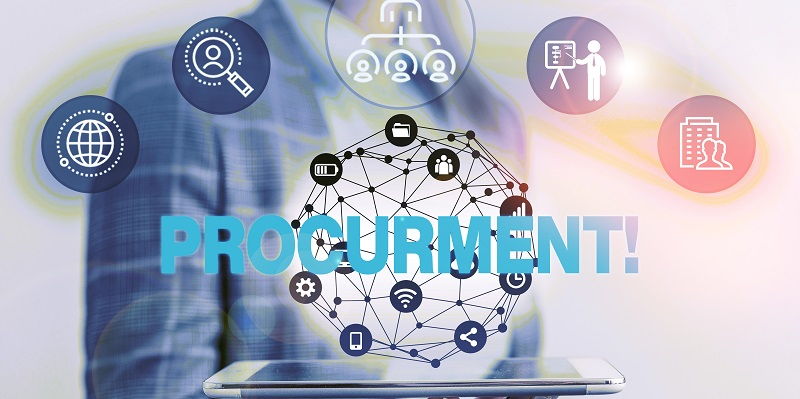The modern business landscape is witnessing a profound shift in the way organizations utilize their workforce. Increasingly, companies are relying on alternative talent sources beyond traditional full-time employees. This changing dynamic necessitates a closer collaboration between the Human Resources (HR) and Procurement functions. By breaking down silos and fostering a more integrated approach, businesses can unlock the true potential of their external workforce, enabling more strategic workforce planning.
The significance of using an external workforce
As companies seek to remain agile and competitive, the utilization of an external workforce provides several significant advantages. By tapping into a broader pool of talent, businesses can access specialized expertise, enhance innovation, and adapt to fluctuating demands more efficiently. External workforce engagement enables companies to access specialized talent on a flexible basis, reducing fixed costs associated with maintaining a full-time workforce.
Shift in Today’s Workforce and Reliance on Alternative Talent Sources
The current workforce landscape underscores the need for a collaborative effort between HR and procurement. Organizations now rely on a variety of alternative talent sources, such as freelancers, contractors, and consultants. Recognizing the unique expertise each function brings, HR and procurement must unite to effectively engage and manage this external workforce. By combining their skills, they can optimize talent acquisition, maintain compliance, and foster a cohesive work environment.
Benefits of a Collaborative Approach in Unlocking the Potential of the External Workforce
Closer collaboration between HR and procurement allows for a more strategic, integrated approach to workforce planning. By sharing insights and aligning their efforts, these functions can ensure that the external workforce is properly aligned with the organization’s goals and objectives. This collaborative approach enables the development of comprehensive talent strategies, including robust recruitment, performance management, and retention practices.
Enhanced Visibility and Management of the External Workforce
Through collaboration, HR and procurement can improve the visibility and management of the external workforce. By leveraging their unique expertise, they can establish clear guidelines and processes for engaging external talent. This includes standardizing contracts, evaluating supplier relationships, and implementing effective performance tracking mechanisms. A collaborative approach facilitates the seamless integration of external workers into the organization, ensuring that they are aligned with company culture, values, and objectives.
Perception Mismatch Regarding the Responsibility of Managing the External Workforce
The 2023 report indicates a perception mismatch regarding the relative responsibility of managing the external workforce. Nearly half of the respondents believe that HR is primarily responsible for overseeing the external workforce. While HR plays a crucial role, effective external workforce management requires a partnership between HR and procurement, leveraging their unique expertise.
This perception mismatch presents significant opportunities for HR and procurement to collaborate closely. By cultivating a shared understanding of their roles, responsibilities, and expertise, these functions can create comprehensive talent strategies that maximize the potential of the external workforce. Building on their respective strengths, HR and procurement can establish clear guidelines for engagement, foster effective supplier relationships, and ensure compliance with legal and regulatory requirements.
Importance of Embracing Total Workforce Management
To optimize business performance, organizations must embrace total workforce management. This holistic approach strives to strike an optimal balance between the internal and external workforce, delivering high-quality results on time, within budget, and in compliance with relevant legislation. Collaboration between HR and procurement is crucial in achieving this balance, ensuring the right talent is engaged for the right tasks, whether internal or external.
By aligning their expertise, HR and procurement can effectively orchestrate the collaboration between internal and external workers. This ensures that projects are completed seamlessly while maintaining quality standards, meeting deadlines, and staying within budget. Collaborative total workforce management enables organizations to optimize resource allocation, drive productivity, and adapt to evolving business needs swiftly.
Improving Visibility and Management of the External Workforce through Collaboration
Embracing total workforce management brings numerous benefits to both HR and procurement. By working together, these functions gain comprehensive visibility into their workforce, enabling them to make informed decisions about talent acquisition, utilization, and development. This collaborative approach facilitates accurate forecasting, succession planning, and performance management across the entire workforce.
In today’s digital economy, technology plays a key role in enabling effective collaboration between HR and procurement. By leveraging advanced workforce management platforms, organizations can streamline processes, centralize information, and enhance communication between these functions. Integrated technological solutions enable transparent data sharing, simplifying administrative tasks, mitigating risks, and improving decision-making.
To succeed in the ever-evolving business landscape, organizations must prioritize cross-collaboration between HR and procurement. By recognizing the unique expertise each function brings, businesses can develop solutions that integrate human capital and procurement strategies seamlessly. Balancing the people factor with technology solutions provides a holistic approach to workforce planning, unlocking the full potential of the external workforce while mitigating the risks associated with co-employment. As industry leaders embrace this collaborative mindset and leverage technology, they will thrive in today’s dynamic workforce environment.

